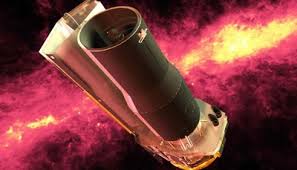Overview
The demonstration of parallax is as close as an observer’s own two eyes. It is the measurement of how the same object appears from two different points of view. Astronomers use the very small angles observed by parallax to estimate distances and relative motion of objects ranging from the sun, moon, and planets to distant stars.
Parallax
The principles of triangulation are used to measure distances for all celestial objects. Imagine a circle around the earth with 2 observatories roughly at opposite sides of the earth from each other, such as Calgary, Canada and Pretoria, South Africa. That is the baseline of the triangle. The apparent position of the moon in the sky will be at a different angle as seen from one observatory than from another at a different location. The moon is the closest celestial object to the earth, so the angle that can be estimated from its movement is the largest, at nearly one degree. According to the principles of trigonometry, if the baseline of the triangle is known, as well as the top angle (measured in fractions of arcseconds), the length of the long side can be estimated accurately.
Solar Parallax
The principle of measuring solar parallax, or parallax to any of the other planets or asteroids in the solar system, uses a baseline measurement of the earth at opposite locations of its orbit. For example, apparent motion can be measured in January and in June. Then, similar calculations can be done to estimate the distance to the other celestial object.
Stellar Parallax
The measurement of the parallax of stars outside the solar system uses such small angles that ancient astronomers could not measure them precisely enough. The parsec is a unit of measure that is based upon parallax. It is equal to about 3.26 light years, an unimaginable distance to astronomers in the 1600s and 1700s. Usable measurements of parallax weren’t possible until the middle of the 19th century.
Applications Using Space Telescopes
The most accurate measurements of parallax are being made far from the obscuring atmosphere of earth. The Hipparcos satellite was launched in 1989, specifically to measure parallax to distant stars, up to about 1600 light-years away. Its companion Gaia mission measured the distances to over a billion stars. Observations from the Hubble Space Telescope can detect distances to stars over 10,000 light years away.
Interested in trigonometry tutoring services? Learn more about how we are assisting thousands of students each academic year.
SchoolTutoring Academy is the premier educational services company for K-12 and college students. We offer tutoring programs for students in K-12, AP classes, and college. To learn more about how we help parents and students in Chapel Hill, NC: visit: Tutoring in Chapel Hill, NC




